2008 Mercedes-Benz S63 AMG – Click above for high-res gallery
There was a time when what we might call super-sedans were largely the province of a dedicated cadre of aftermarket tuners. Companies like Brabus, Alpina and, of course, AMG would generally start with mid-sized German sedans and transform them into something truly special. AMG in particular came to the forefront in 1987 after two decades of building special Mercs when they unleashed the Hammer. They had been building cars for two decades already, but the Hammer took things to a new level by installing a 5.6L V8 from the 560SEC coupe modified with twin-cam four valve heads into the mid-size 300E sedan. With that car, AMG set off an arms race that continues to this day. The tuners are still out there but AMG was eventually brought in from the cold when it was bought by Mercedes-Benz. Today AMG produces high performance versions of almost all Mercedes models and standing near the pinnacle of the lineup is the S63 sedan. Find out what the AMG S63 is like to live with after the jump.
Photos Copyright ©2008 Sam Abuelsamid / Weblogs, Inc.
The S63 is not quite the ultimate S-Class from Mercedes. That crown falls to the twin-turbo V12 S65. The S63 is instead powered by AMG's bespoke 6.2L naturally aspirated V8. AMG designed and built this exclusive V8 that is installed across the range of AMG badged models. Unlike previous AMG engines, this one shares no parts with standard Mercedes engines. In the S63 it generates 518 horsepower and 465 lb-ft of torque, enough to propel the 17-foot long, 4665-lb S63 to 60 mph in 4.5 seconds and achieve an electronically limited top speed of 155 mph. Opting for the $7,000 performance package adds a 20-inch wheel/tire package, a limited slip differential and a reprogrammed speed limiter set to 186 mph. You might be asking yourself, what possible good is that extra 31 mph in the United States where there is nowhere to legally use it? A very reasonable question that we'll return to a little later.
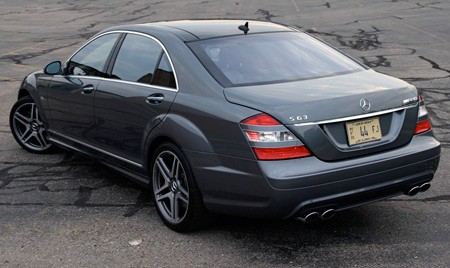
While super sedans are more elevated than ever, the effect on their performance is seeing diminishing returns as manufacturers try to outdo themselves with technological wizardry. This is where the S63 truly shines. Unfortunately, in some respects it is also its downfall. There are almost no features available on any high end car anywhere in the world that you won't find on the S63 and there are also gimmicks in this car that can't be found anywhere else. We don't use the word gimmick lightly here. While there are useful features like adaptive cruise control, others are absolutely superfluous. Top of the list here is the Drive-Dynamic front seats, which surprised when taking the S63 around our first corner. As the car builds cornering force, the seat bolsters begin to grope your sides. As you turn left the right side bolsters push inward, presumably to hold you in place. Turn right and the opposite side moves. This is a feature that adds weight and complexity to the car without adding useful functionality.
The video meant to be presented here is no longer available. Sorry for the inconvenience.
Another problem with all the gimmickry is that it requires controls. If all of these features had physical controls, the entire inner surface of the car would be covered with buttons and knobs. As its German counterparts have done, Mercedes has a control knob-based system with access to these features buried in a menu structure on the center mounted screen. Many of the adjustments for the seats are in the graphical menu system. The Drive-Dynamic function, which is standard on the front seats and available as an option with the 2-seat rear configuration, can be adjusted in intensity or turned off. A massage function within the seats can also be controlled here. All manner of controls are embedded somewhere in there. Fortunately, there are three memory positions available. Aside from all the electro-mechanical wizardry, the seats themselves are comfortable and don't need the fancy stuff embedded in their foam.
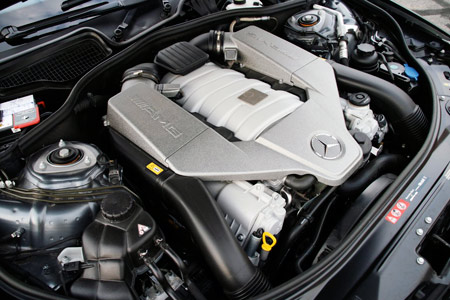
More technology is buried in the instrument cluster. While the tachometer, fuel and temperature gauges are physical dials, the center of the cluster where the speedometer sits is an LCD. When the sun drops below the horizon, a button on the left side of the dash becomes effective to activate the night vision assist. This system uses an infra-red sensor to detect what's well beyond the reach of the headlights. When active, the speedometer shrinks to a horizontal bar across the bottom of the screen. Above that the infra-red image is displayed. Night vision systems are not a new idea, with Cadillac having introduced a similar system in 2000 that failed more because of its cost than its functionality.
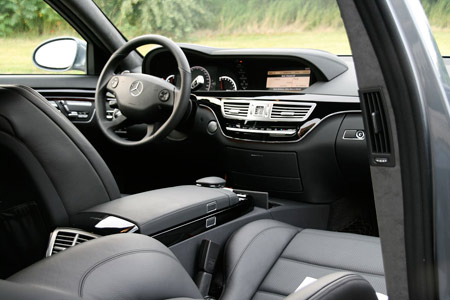
The idea of reducing the array of physical controls in a car by integrating them into a multi-functional interface is probably a good idea. Unfortunately to date no one has done a particularly good job of making such a system easily navigable by the driver. While the Mercedes setup is better than the current BMW iDrive (we haven't tried the new 2009 version yet), it still has plenty of room for improvement. Perhaps the only real answer to the problem is to reduce the number of functions available to the driver.

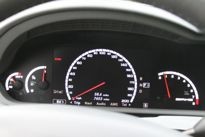
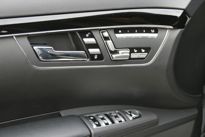
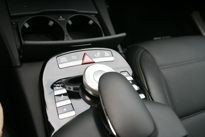
Beyond the groping seats and seemingly endless variety of controls, there is the actual driving experience. The S-Class is a big machine and in AMG S63 form it moves surprisingly briskly. The 518 hp is fed to the rear wheels via a 7-speed automatic gearbox. Mercedes uses a column-mounted shift stalk that operates in a similar manner to recent BMWs, though it's nothing more than an electronic switch. Tapping it upward engages Reverse, down brings Drive, and returning to Park requires pushing the button on the end of the stalk. Manual control of the gear selection process is provided by the now typical pair of paddles on the back side of the steering wheel.
While the S63 provides some nominal degree of manual control, the bottom line is that this is not really a driver's car. The electro-mechanical wizardry ends up filtering the interaction between the vehicle and the road. There's virtually no indication through the steering wheel of the degree of the forces between the front wheels and the pavement. The Active Body Control damping system means that S63 exhibits essentially no body roll as you go around corners, and the torso-groping seats give a strangely artificial kind of feedback about the overall cornering force that the car is generating. Even the growl of the engine is thoroughly muted by all the insulation and dual pane side glass. The transmission shifts are smooth and seamless, but even with the stability control "turned off" the computer systems retain an excessive degree of control over the experience.
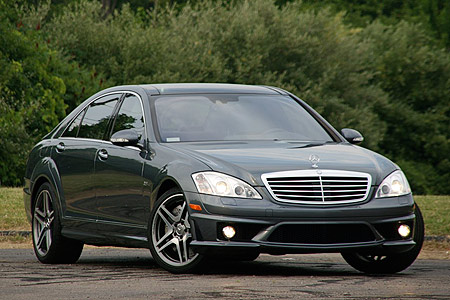
With over 500 hp on tap, you would think it possible to do a nice burnout in the S63. Such activity is clearly considered to be immature and unseemly by German engineers and the best that can be achieved is a chirp before the electrons intervene. It's more like playing a driving video game where any feedback you get is simulated. One thing that definitely isn't simulated is the heat generated by the engine. Standing next to the S63 with the engine idling, you can feel the waves of heat emanating from within.
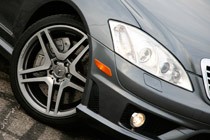
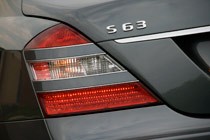
So if this isn't a car for drivers, who is it for? The S63 may not be for anyone in this country. Its handsome looks aren't distinct enough to set it apart from much cheaper standard issue S-Class sedans and its high speed cruising ability can't be legally utilized on U.S. roads. Those who want to be driven and stand out will more likely opt for a Bentley Flying Spur or Rolls-Royce Phantom. Those who want more of a driving experience are also more likely to opt for a Bentley Continental or something smaller like an RS6, M5 or E63.
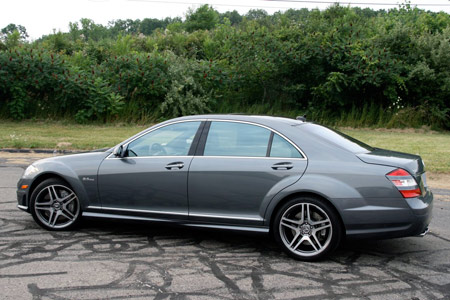
No, this car is for wealthy European executives who need to get from Stuttgart to Hamburg in a hurry but don't want the hassle of an airport or train station. Even at $143,000 the S63 is less expensive than a private jet but the rear compartment is cavernous enough that it's probably more comfortable than anything smaller than a G5 or Challenger. The S63 and all of its technology is really just a prime example that just because we can do something, it doesn't necessarily mean that we should.
Photos Copyright ©2008 Sam Abuelsamid / Weblogs, Inc.



Sign in to post
Please sign in to leave a comment.
Continue